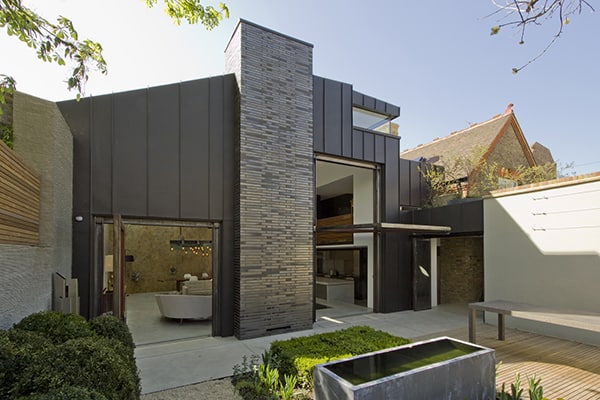
House Little Venice is a matt black zinc and glass contemporary building attached to a former coach house designed by James Wells Architects, located in Little Venice, London. Bounded by secret walled gardens, this new residential building replaces a derelict warehouse that had once been a joinery shop for an antique furniture company. The interior design of the new home acknowledges the industrial heritage of the site with bespoke fixtures and unusual finishes, employing the best of British craftsmanship.
From the architect: The west garden is accessed through French windows from the coach house and is planted in the Victorian Romantic style with an auricula theatre. The east garden is accessed via a hydraulic glass panel and responds to the modernist lines of the new building with structured planting, floating levels, steel water features and specially designed concrete furniture. The garden is thus made to feel like an external room – an extension of the main living space.
A discreet door in a side wall off a quiet side street provides the entrance to this extraordinary one bedroom house. An unassuming Victorian coach house built of London stock brick with exposed timber trusses has been retained and restored to provide a bedroom suite while the rest of the house has been newly built. The entire project took eighteen months to complete due to structural requirements as well as the bespoke nature of the details, one-off fixtures and finishes.
To the rear is a surprising, modern space bathed in natural light from a hydraulic pivoting wall of glass and a large skylight. The structure and mechanics are exposed and steelwork is left unfinished; polished concrete combines with black brickwork to create a post-industrial setting. The structural glass floor allows natural light and a visual link to an underground library and screening room below.
In the coach house the sleeping quarters are set in a theatrical dark space with an Alice in Wonderland play on scale. Dramatic double height wall panelling, exposed timber trusses, reclaimed parquet floors from the demolished warehouse and an oversized roaring fireplace are lit by a vast 1960s chandelier of cast yellow and white glass. Exposed engineered winches and cable mechanisms raise a bespoke metal and glass lantern and a plasma screen.
A deliberate duality contrasts the moods of the private and public areas. A massive pivoting brick wall finished in engineering brickwork links these two contrasting worlds.
The underground library and screening room showcases a chestnut leather conversation pit is sunk into the polished concrete floor embraced by the soft glow from the surrounding shelves of books and artifacts.
Photos: Courtesy of James Wells Architects

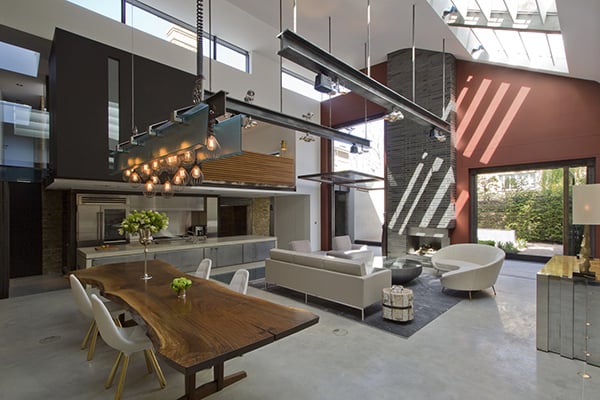
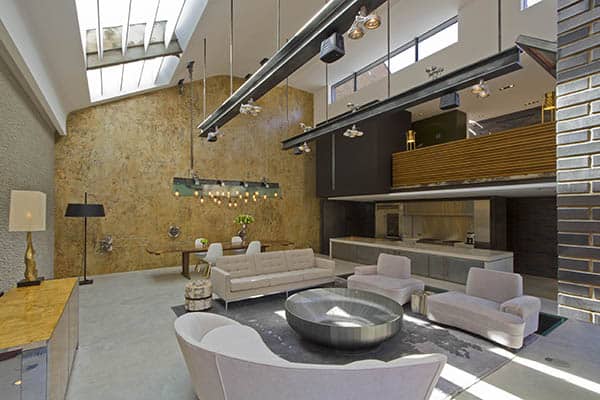
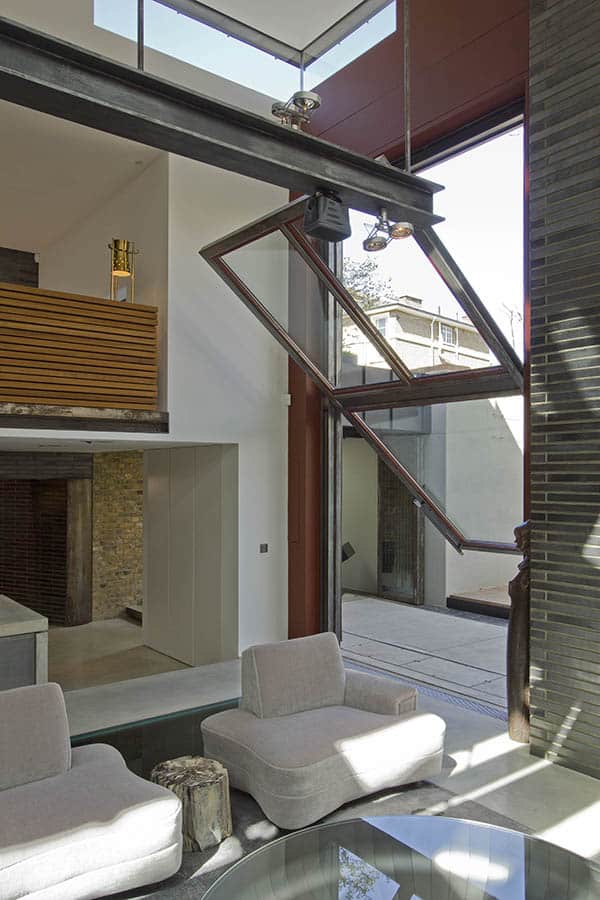
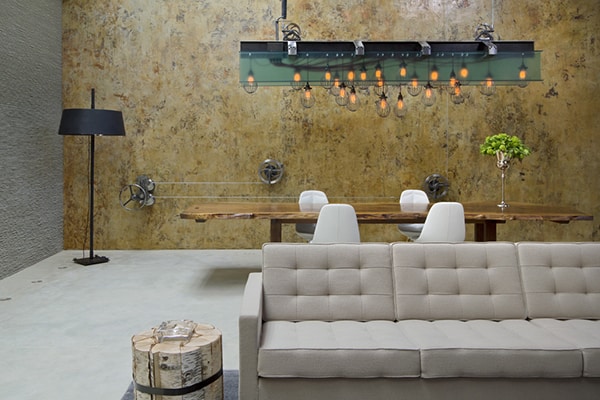
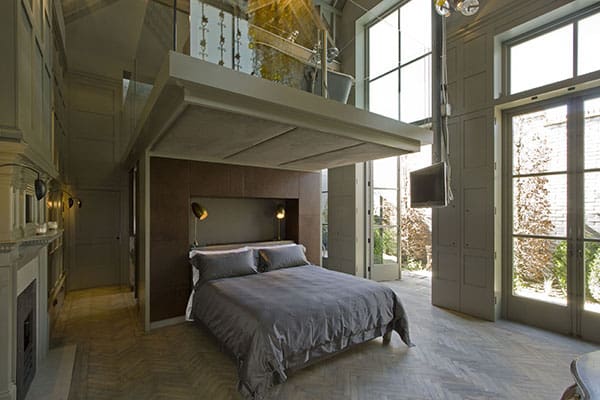
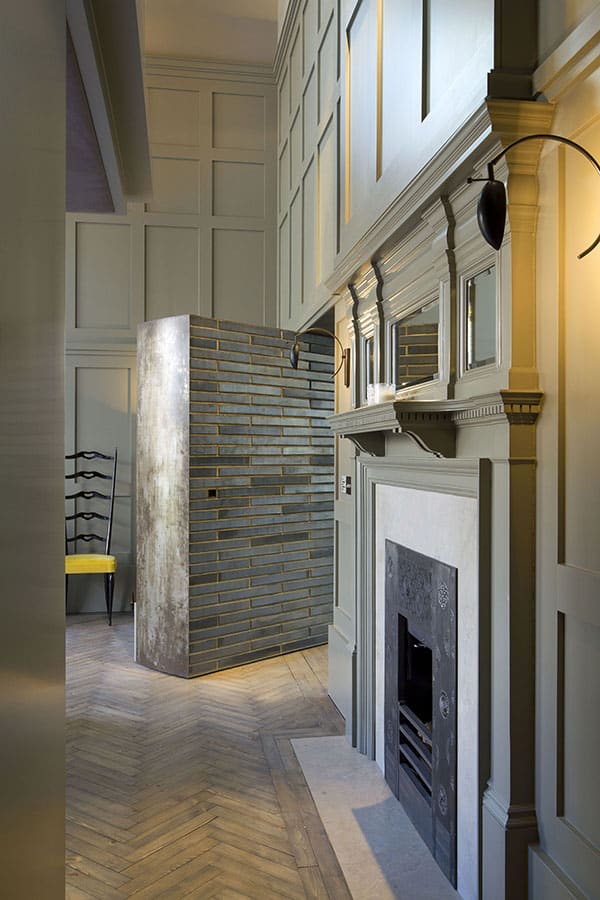
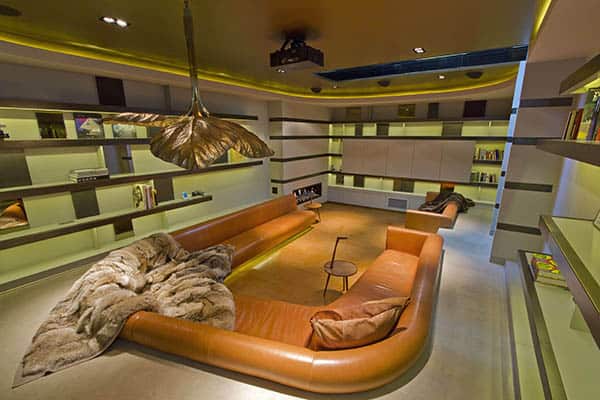
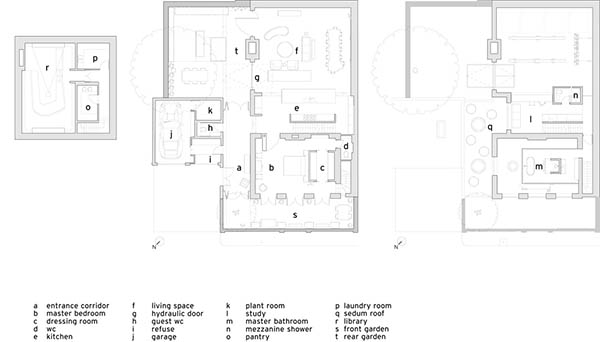
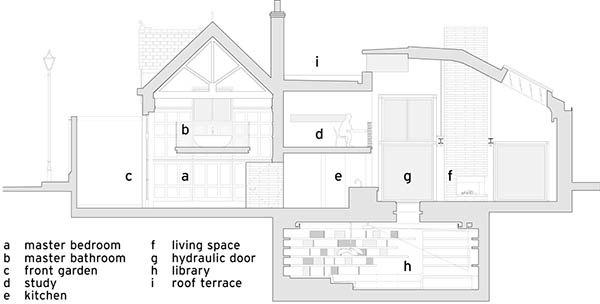
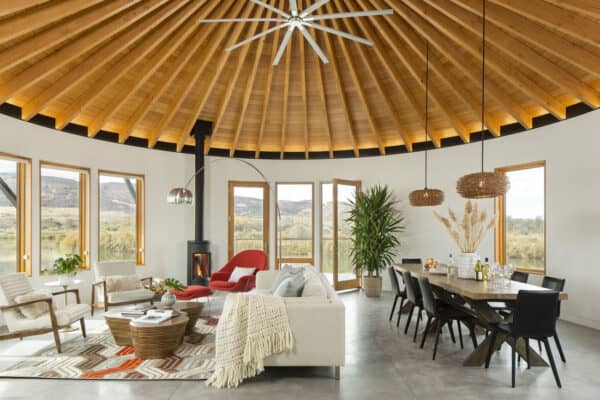
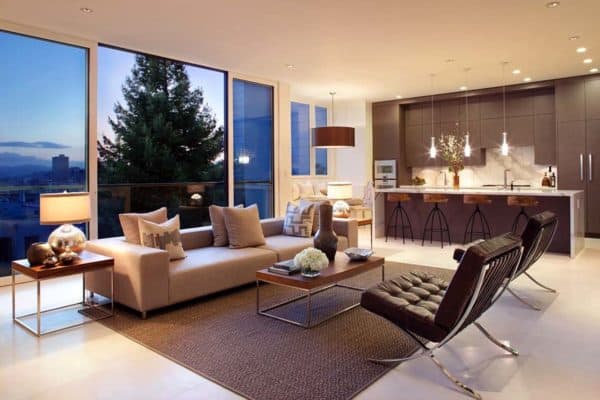

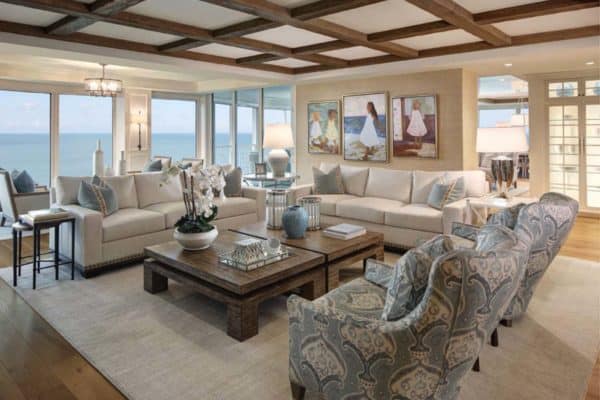
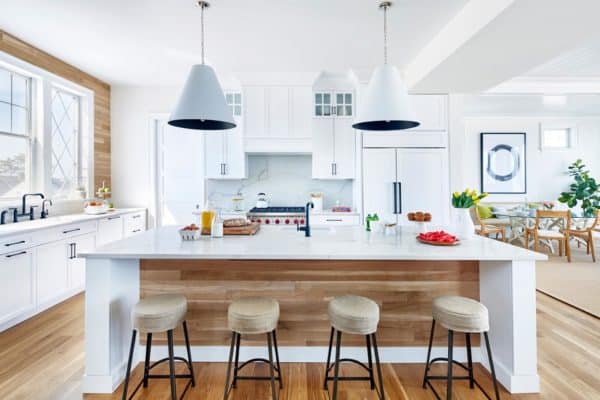

0 comments